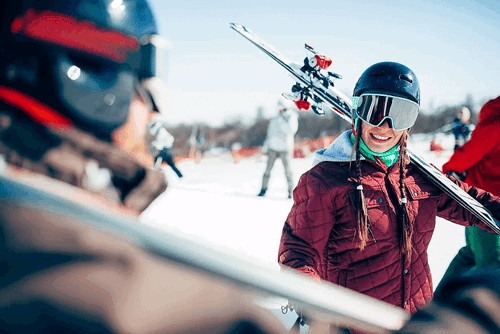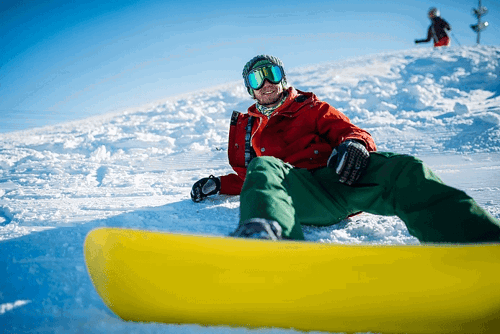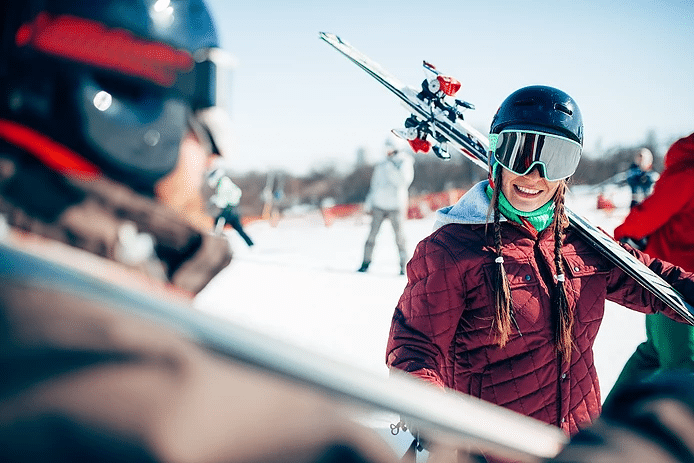What is snow blindness and how to treat it?
Bright white snow may look like a winter wonderland, but snow and sun combined can damage your eyes temporarily, a condition known as called snow blindness.
What is snow blindness and how can you treat it? Luckily, if you’re planning on hitting the slopes this winter it’s a condition that can be easily prevented and treated…
Can snow affect your eyes?
The snow reflects up to 80% of the sun’s UV rays and is especially damaging at elevation. If you are a skier, snowboarder, or someone who lives at altitude in a snowy climate, failing to protect your eyes against UV exposure could lead to snow blindness.
Just like getting burned by the sun on your skin, when you start to notice symptoms of snow blindness, you’ve already been out in the sun too long.

What is snow blindness?
Snow blindness – also known as arc eye or photokeratitis – is a painful condition causing temporary loss of vision due to overexposure to the sun’s UV rays.
Photokeratitis (photo = light and keratitis = inflammation of the cornea) is sunburn to the cornea, the clear front surface of the eyes.
Other causes of UV damage to eyes
It isn’t just snow that can cause snow blindness.
White sand and water reflect the sun’s UV rays and can also cause photokeratitis. If you spend time doing water sports it is very important to invest in a quality pair of wraparound sports goggles.
UV light is also present when you use sunbeds, so it is important to protect your eyes when you use a tanning bed.
If you work in an environment where you are exposed to bright lights – if you are a welder, for example – then you must also wear protective eyewear. This is more commonly known as arc eye or welder’s flash.
Is snow blindness permanent?
Can exposure to snow in bright conditions actually make you go blind?
Contrary to what the name suggests, snow blindness doesn’t cause actual blindness although your vision may be temporarily impaired.
Snow blindness is easily treatable. Your eyes will heal quickly once you rest indoors and keep your eyes away from UV rays.

What are the symptoms of snow blindness?
How can you tell if your eyes have been affected by the snow? Snow blindness symptoms can start to appear 6-12 hours after exposure.
The main symptoms are:
- pain in the eyes
- temporary loss of vision
- a gritty feeling as if there is something in the eye
- headache and blurred vision
- watery eyes.
How is snow blindness treated?
As well as wrapping up in warm clothing in the snow, we need to remember how important it is to protect our eyes by wearing ophthalmic UV blocking goggles or sunglasses.
To treat the symptoms of snow blindness you should:
- make sure you remove contact lenses if you wear them
- stay indoors in a dark area until symptoms start to subside
- use artificial tears to add moisture to the eyes
- use a cold compress such as a cool flannel to soothe the eyes
- avoid rubbing the eyes
- wear sunglasses if preferred
- over the counter pain relievers can help to ease the discomfort.
How long does it take for snow blindness to go away?
Once you are away from the source of the problem, recovery is usually fairly rapid. You can expect your eyes to return to normal in about 24 to 48 hours.
If symptoms persist or seem to be getting worse, it is very important that you visit your doctor or Optometrist as occasionally antibiotic eye drops may be required.
Prevention of snow blindness
Stay safe in the sun and snow by wearing a pair of goggles or sunglasses that block 100% of UV rays. If you need prescription sunglasses or goggles then your optician can recommend the best brands and tailor made lenses to meet your needs.
Related articles





